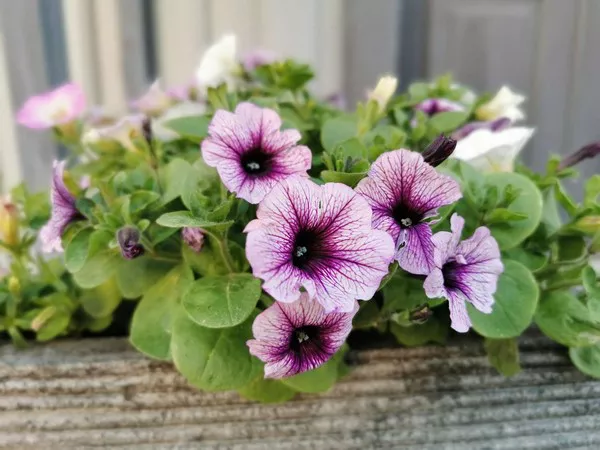Before you can expect a bountiful flower garden, it’s essential to lay a solid foundation in the form of healthy, nutrient-rich soil. Proper soil preparation not only ensures the success of your flowers but also promotes their growth and vitality throughout the growing season. In this guide, we’ll delve into the steps necessary to get your soil ready for planting flowers, covering everything from soil testing to amending and conditioning techniques.
1. Conducting a Soil Test:
The first step in preparing your soil for planting flowers is to understand its composition and pH level. A soil test provides valuable insights into nutrient levels, pH balance, and soil texture, allowing you to make informed decisions about soil amendments. Soil testing kits are readily available at garden centers or through local agricultural extension offices. Follow the instructions carefully to collect soil samples from various areas of your garden and send them off for analysis. Once you receive the results, you’ll have a better understanding of your soil’s specific needs.
2. Assessing Soil Texture:
Soil texture refers to the relative proportions of sand, silt, and clay particles in your soil. Each soil type has its own unique characteristics that affect drainage, aeration, and nutrient retention. Sandy soils drain quickly but may struggle to retain moisture and nutrients, while clay soils hold onto water but can become compacted and poorly aerated. Ideal soil for most plants is a loamy soil, which contains a balanced mixture of sand, silt, and clay. To assess your soil texture, perform a simple squeeze test: grab a handful of damp soil and squeeze it into a ball. Sandy soil will crumble apart easily, while clay soil will form a dense, sticky ball. Loamy soil will hold together but still crumble when lightly pressed.
3. Improving Drainage:
Good drainage is crucial for healthy plant growth, as it prevents waterlogged conditions that can lead to root rot and other problems. If your soil has poor drainage, there are several strategies you can use to improve it. One option is to incorporate organic matter such as compost, leaf mold, or well-rotted manure into the soil. Organic matter helps to loosen compacted soil, increase soil porosity, and enhance drainage. Spread a layer of organic matter over the soil surface and work it into the top few inches using a garden fork or tiller. Another method is to create raised beds or mounded planting areas, which provide better drainage than flat ground. Finally, you can also install drainage tiles or French drains to redirect excess water away from your planting beds.
4. Balancing Soil pH:
Soil pH plays a crucial role in nutrient availability and plant health. Most plants prefer a slightly acidic to neutral pH range, typically between 6.0 and 7.0. If your soil is too acidic or alkaline, it can hinder nutrient uptake and affect plant growth. To adjust soil pH, you can apply amendments such as lime to raise pH or sulfur to lower pH. However, it’s important to proceed with caution and make gradual adjustments, as rapid pH changes can stress plants and disrupt soil microbial activity. Refer to your soil test results to determine the appropriate amount of amendment needed, and follow application instructions carefully. After applying amendments, retest the soil periodically to monitor pH levels and make further adjustments as needed.
5. Adding Nutrients:
In addition to pH balance, plants require essential nutrients for healthy growth and development. Nitrogen, phosphorus, and potassium are the primary macronutrients needed in relatively large quantities, while micronutrients such as iron, zinc, and manganese are required in smaller amounts. Organic amendments such as compost, aged manure, and bone meal are excellent sources of nutrients and help improve soil structure over time. Alternatively, you can use commercial fertilizer products formulated specifically for flowering plants. Follow package instructions for proper application rates and timing, taking care not to over-fertilize, which can lead to nutrient imbalances and environmental pollution.
6. Mulching and Protecting Soil:
Once you’ve prepared your soil and planted your flowers, it’s essential to maintain soil health throughout the growing season. Mulching is a valuable practice that helps conserve moisture, suppress weeds, and moderate soil temperature. Organic mulches such as shredded bark, straw, or compost provide additional nutrients as they decompose and improve soil structure over time. Apply a layer of mulch around your flower plants, taking care to leave a small gap between the mulch and plant stems to prevent moisture-related issues. Additionally, avoid walking or compacting the soil around your plants, as this can disrupt root growth and lead to soil compaction.
Conclusion
Preparing your soil for planting flowers is a critical step in establishing a vibrant and productive garden. By conducting a soil test, assessing soil texture, and addressing drainage and pH issues, you can create an optimal growing environment for your plants. Incorporating organic matter and essential nutrients into the soil promotes healthy root development and robust flowering. With proper soil preparation and ongoing maintenance, you’ll be well on your way to enjoying a beautiful and thriving flower garden year after year.


